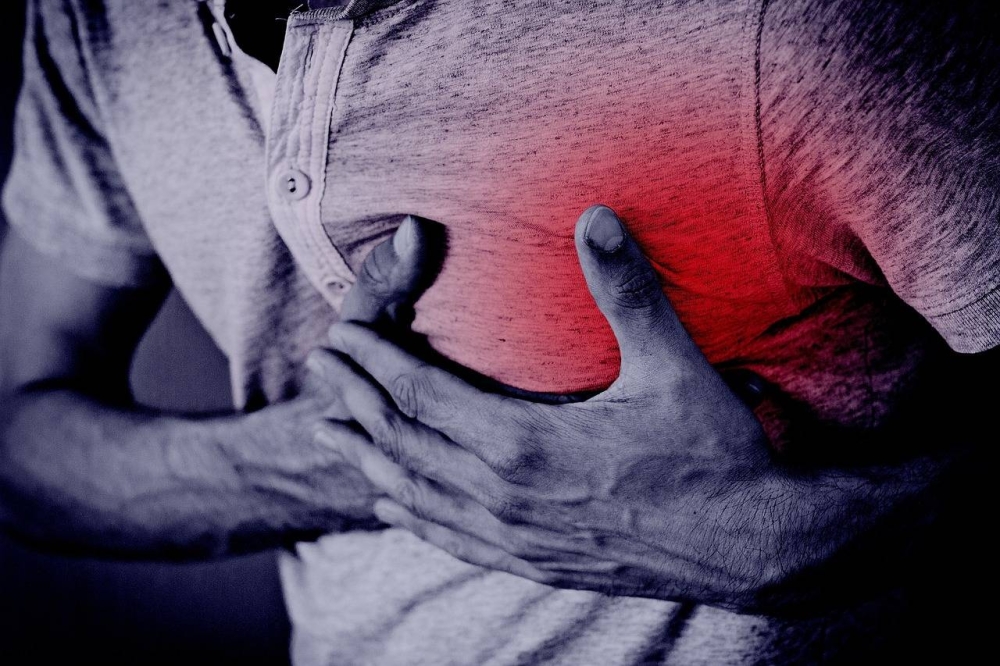One in four Malaysians may suffer a stroke by 2040 if no preventive action taken
31 Oct 2023 05:03pm

Picture for illustrative purposes - FILE PIX
Even alarming is that stroke patients are getting younger and in fact, one in four strokes now occur in people under the age of 50.
Sunway City’s Assistant Medical Director and Consultant Emergency Physician at Sunway Medical Centre Dr Lee Tuan Cheong in a statement shared that stroke was the third leading cause of death in Malaysia.
"According to the National Stroke Registry, there were 47,911 stroke incidences in 2019, which means that about 130 people suffer from stroke every day in Malaysia,” he added.
Furthermore, he said the country also records almost 32 deaths per day due to stroke and patients are almost always burdened with various morbidities where seven out of 10 stroke patients will need to depend on others to survive.
According to Dr Lee, the most common risk factors of stroke include high blood pressure, diabetes and high cholesterol; smoking; obesity and physical inactivity; heart disease or irregular heartbeat (atrial fibrillation) and family history of stroke.
He emphasised that the most significant contributor to a stroke attack is high blood pressure as it can damage the walls of arteries, making them more likely to narrow or form a clot, which leads to a stroke.
When a stroke occurs, the signs and symptoms may vary depending on the part of the brain that is affected which include sudden numbness or weakness on one side of the body, sudden confusion or trouble speaking, sudden trouble seeing in one or both eyes, sudden difficulty walking or balancing and sudden severe headache with no known cause.
There is also a simpler way to keep in mind these signs by remembering B.E.F.A.S.T (B - Balance: loss of balance, headache or dizziness, E - Eyes: blurred vision, F - Face: one side of the face droops, A - Arms: arm or leg weakness, S - Speech: difficulty in speaking, T - Time: immediately call for an ambulance or the nearest accident and emergency department).
Dr Lee said it was important to act quickly and seek medical treatment during a stroke attack, as early treatment can help reduce the damage caused by the stroke as well as improve the chances of a full recovery.
"It is best to head to the hospital immediately after the onset of symptoms. Preferably within 4.5 hours because reperfusion therapy (re-establishing blood supply), such as thrombolysis and thrombectomy in ischemic stroke have been proven to minimise disability.
"It is understood that up to 90 per cent of strokes can be prevented and attributable to a few modifiable risk factors. Knowing these risk factors and taking the necessary steps to reduce them, you can lower your chances of having a stroke,” he added.
Meanwhile, Sunway City’s Consultant Rehabilitation Medicine Specialist at Sunway Medical Centre Dr Foong Chee Chong said with medical advancements, there are many rehabilitation processes fit for stroke survivors, such as robotic technology, non-invasive brain stimulation, and virtual reality that can help stroke survivors achieve better functional improvement.
"One such advanced technology is an exoskeleton gait trainer, which helps to increase the chances of stroke survivors in improving their mobility, which would generally take between one to three months. This is due to the fact that such robotic technology not only provides intensive training with accurate feedback, it also offers various levels of assistance depending on the severity of the patient,” he said.
For stroke survivors, Dr Foong said rehabilitation is an imperative part of the journey to recovery and choosing a healthcare facility that is well-equipped with the right expertise and tools to support the process leads to significant improvements.
According to Dr Foong, a stroke survivor can also perform a few types of exercises at home depending on the severity of the stroke such as flexibility exercise, strengthening exercises, balance exercises, functional task training and aerobic exercise.
"More importantly, be there to support your loved ones throughout their long recovery journey. Be patient and persevere. Although they may not be able to regain their health and function completely, do understand that they can still have a meaningful life, albeit in other ways,” Dr Foong advised - BERNAMA









